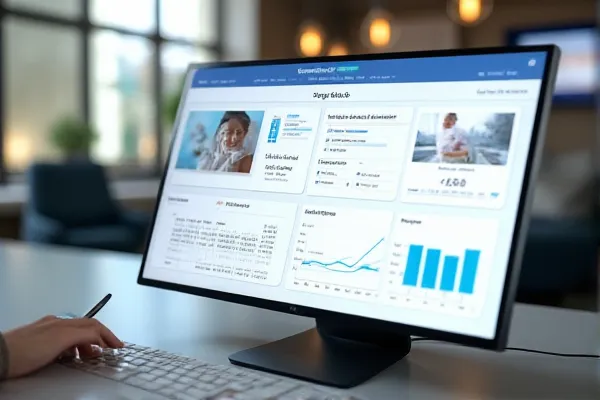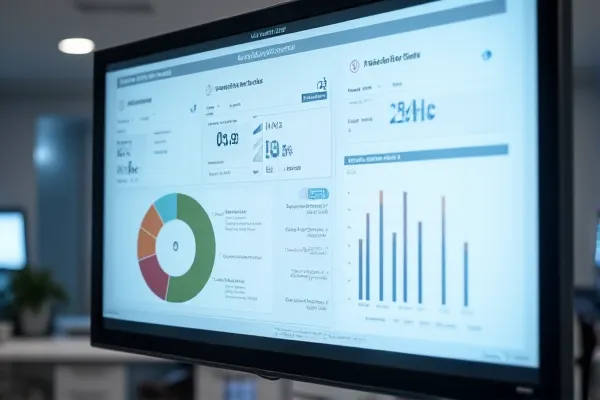Dental implants aren’t just clinically advanced—they’re financially strategic. With high-margin procedures, cross-selling opportunities, and long patient lifetime value, implants can become a major growth engine for any modern dental practice. This article explains where profitability comes from, what to invest in, and how to scale wisely.
Dental implants improve long-term practice profitability by offering high-margin revenue, multiple billable procedures per case, strong patient retention, and opportunities for cross-selling related treatments. Strategic workflow and KPI tracking further enhance financial performance.
Why Are Dental Implants Considered a High-Value Treatment?
Dental implants are more than just a high-ticket item—they create long-term revenue potential, attract premium patients, and generate multiple service layers within a single case. Understanding where their value comes from helps clinics make smarter investments in implant services.

Implant case revenue model
Average Case Revenue per Implant Unit
Implants generate more revenue per unit than most fixed restorative procedures.
- A single implant case may include surgery + abutment + crown
- Typical fees range from $2,500–$5,000 per unit in many private markets
- Multi-unit or full-arch cases can reach $15,000–$30,000+
Repeat Visits and Ancillary Procedures
Implants are not “one-and-done” treatments.
- Each case may include CBCT, tissue shaping, custom temporaries
- Follow-up visits for occlusion, hygiene, or provisionals are billable
- Ancillary steps often increase total value by 20–40%
Cross-Selling: Bone Grafts, Guides, Restorations
Implants unlock related procedures within the same treatment flow.
- Grafting, surgical guides, immediate provisionals are high-margin services
- Each one increases case revenue without requiring new patient acquisition
- Patients often accept bundled pricing for convenience
Alignment with Premium Patient Segments
Implant patients often match high-trust, high-lifetime-value profiles.
- They tend to invest more in esthetics, hygiene, and follow-up care
- Willingness to refer others is higher when satisfaction is strong
- They also respond better to structured care plans vs. reactive treatment
✅ Implant services create layered value across surgical and restorative phases – TRUE
explanation: implants include multiple billable components—surgery, abutment, restoration, scans, and provisionals—making them a compound revenue opportunity per patient.
❌ Implants only make money from the surgical fee – FALSE
explanation: the true revenue of an implant case comes from its total treatment arc. clinics that coordinate surgery, lab, and prosthetics unlock much higher case value.
What Are the Startup and Ongoing Costs for Implant Services?
Starting or scaling implant services can be profitable—but it requires up-front investment and ongoing cost control. Clinics that understand these layers early can avoid margin erosion and plan smarter for long-term growth.

Implant service cost breakdown
Equipment and Training Investment
Initial startup requires both hardware and know-how.
- Typical implant motor units: $3,000–$6,000
- Surgical kits and handpieces: $2,000–$4,000 per system
- CBCT units and digital scanners: high-cost but long-term ROI
- Doctor and team training often costs $5,000+ per program
Lab Fees and Component Costs
Every case includes fixed and variable lab-related expenses.
| Item | Typical Cost Range |
|---|---|
| Abutment + Crown (Lab) | $250–$500 |
| Surgical Guide (if used) | $150–$300 |
| Implant Fixture (OEM) | $180–$350 |
- Generic or compatible parts reduce material cost, but must be vetted
- Remake rates impact total lab spend significantly
Consumables and Surgical Overhead
Implants aren’t just about the fixture—they require per-case materials.
- Bone graft material, membranes, sutures, gloves, irrigation
- Sterilization and room prep between cases
- All must be tracked to prevent profit leakage
Maintenance of Digital Tools and Software
Digital tools boost efficiency—but have ongoing costs.
- CAD/CAM software license renewals (e.g., 3Shape, Exocad)
- Scanner and milling unit servicing or upgrades
- Cloud-based case portals and secure storage plans
Cost awareness enables sustainable implant growth
Implant dentistry isn’t plug-and-play—it’s a clinical and business model. Teams that track both investment and operational cost gain better control over pricing, margins, and scale-readiness.
Need help forecasting lab-related cost per case or building implant cost models?
[Contact Raytops Dental Lab] to explore sample quotes, compatible system options, and case-level cost planning templates we use with global partners.
How Do Implants Compare to Other Restorations in ROI?
Implants aren’t just higher priced—they’re often higher margin. When accounting for remakes, chair time, and long-term follow-up, dental implants can outperform crowns or dentures in return per hour, per patient, and per treatment cycle.

ROI comparison of dental treatments
Per-Case Margin vs. Crowns and Dentures
Implants bring in more—but also cost more. Net profit is what matters.
| Restoration Type | Average Revenue | Typical Margin |
|---|---|---|
| Single Crown | $900–$1,200 | 50–60% |
| Denture | $1,000–$1,500 | 45–55% |
| Single Implant | $2,500–$5,000 | 60–70% |
- Implant costs are higher, but multi-phase billing spreads risk
- Full-arch cases create bundled margin opportunities
Lower Remake Rate and Higher Case Acceptance
Implants last longer and patients are more satisfied when guided properly.
- Crowns or bridges may be redone every 7–10 years
- Implant cases—when properly planned—have lower failure or remake rates
- Guided treatment plans improve confidence and acceptance
Fewer Complications = Less Chair Time
Once healed, implants require fewer reactive visits.
- No post-cementation sensitivity, no recurrent decay
- Lower hygiene emergencies than bridges or dentures
- Well-seated implants rarely return with urgent complaints
Strong Lifetime Value per Patient
Implants often lead to extended patient relationships.
- Satisfied implant patients return for hygiene, checkups, and referrals
- Higher trust = greater loyalty and multi-service acceptance
- Lifetime revenue far exceeds one-time crown placements
✅ Implants deliver higher ROI over time compared to crowns or dentures – TRUE
explanation: while upfront costs are higher, implant services generate more margin per case, reduce remake risk, and lead to higher lifetime value per patient.
❌ Crowns are more profitable because they cost less – FALSE
explanation: crown costs are lower, but so are margins and repeat volume. implants offer layered revenue from surgery, lab work, provisionals, and follow-ups.
How Can Implant Services Attract New Patients?
Beyond clinical outcomes, implant services have strong market appeal. They tap into both functional and esthetic demand—and when positioned properly, they become a magnet for new patient acquisition and word-of-mouth growth.

Implant marketing strategies
Marketing Appeal of Fixed Solutions
Many patients actively seek permanent alternatives to dentures.
- “No removable teeth” is a powerful emotional value proposition
- Implants rank high on Google search for smile restoration terms
- Positioning implants as life-improving, not just clinical, boosts interest
Online Search Demand and Google Ads ROI
Implant keywords are high-traffic—and high-conversion.
- “Dental implants near me” is one of the top searched phrases in dental
- Localized PPC campaigns yield measurable return
- Strong landing pages with before–after images increase lead conversion
Patient Referrals After Aesthetic Results
Implant cases often become visual testimonials.
- Esthetic anterior restorations generate organic social proof
- Satisfied patients refer friends/family facing similar situations
- Good visuals = good referrals
Positioning as a “One-Stop Implant Center”
Patients value coordination and confidence.
- Full-service implant workflow (CBCT, surgery, lab) signals professionalism
- Reduce patient drop-off across referrals and handoffs
- Clinics that promote “in-house control” attract more implant-driven patients
Implant visibility drives growth beyond single cases
Implant patients bring more than revenue—they bring stories, search traction, and loyalty. Clinics that invest in showing their results, explaining value, and simplifying the experience consistently outperform competitors in new patient volume.
Need implant-focused marketing content or case documentation templates?
[Contact Raytops Dental Lab] to explore visual kits, case portfolios, and lab-aligned tools used to help clinics stand out in competitive markets.
What Metrics Should Clinics Track to Measure Profitability?
Revenue is not the same as profit—and busy doesn’t always mean efficient. By tracking the right implant-specific metrics, clinics can better understand performance, spot bottlenecks, and optimize for long-term return.

Implant service KPI dashboard
Implant Revenue per Op/Hygiene Hour
Chair time is the most limited resource in a clinic.
- Calculate gross revenue per operatory hour across implant cases
- Compare to other procedures (crowns, hygiene, emergency care)
- Identify where high-value time is being underused
Treatment Plan Acceptance Rate
Planning isn’t profit until accepted.
- Track how many implant cases are accepted vs. proposed
- Review by provider, coordinator, or case complexity
- Identify drop-off points: cost, time, or fear
Case Completion Time per Type
Profit is delayed when cases drag out.
- Measure time from consultation to final delivery
- Benchmark different case types (single unit, full-arch, grafted)
- Long timelines = more unproductive admin and follow-up
Implant Department Overhead Ratio
More revenue only matters if it’s efficient.
- Include lab, parts, software, marketing, and staff
- Divide by total implant revenue to find % overhead
- Use trends to adjust pricing or workflows
✅ Tracking specific implant KPIs improves long-term profitability – TRUE
explanation: when clinics monitor metrics like revenue per hour and acceptance rate, they gain insights to adjust workflow, pricing, and staff utilization for better return.
❌ Total implant revenue is the best indicator of profitability – FALSE
explanation: total revenue hides inefficiencies. without context like margin, time, and overhead, it’s easy to mistake growth for profit.
How to Scale Implant Services for Maximum Return?
Scaling implant services isn’t about doing more—it’s about doing better, more consistently. Clinics that grow successfully tend to systematize workflows, maximize clinical efficiency, and build strong lab and referral partnerships.

Implant workflow system
Build a Repeatable Clinical Workflow
Consistency increases efficiency—and reduces errors.
- Standardize steps for implant consultations, scans, planning, delivery
- Use templates for records, photos, and patient communications
- A clear protocol means faster onboarding for staff and fewer remakes
Integrate CAD/CAM and In-House Lab Work
Digital integration saves time and protects margins.
- In-house design shortens turnaround and allows real-time adjustments
- Partial in-house workflows (e.g., try-ins, temp crowns) still offer ROI
- Not every clinic needs a full lab—start with high-impact stages
Delegate Low-Value Tasks to Maximize Op Time
Chair time should be used where it creates the most value.
- Train assistants to manage scanning, photos, patient education
- Use coordinators to explain costs and schedule follow-ups
- The doctor should focus on surgery, planning, and final approvals
Add Specialist or Referral Pipeline Partnerships
You don’t need to do everything in-house to grow.
- Partner with periodontists or oral surgeons for complex surgeries
- Use external labs like Raytops for advanced design and manufacturing
- Build shared workflows with clear turnaround and communication points
Scaling implant services requires process, not just volume
Growing implant revenue is not about squeezing more into the schedule. It’s about tightening workflows, leveraging your team, and aligning with the right lab and referral partners.
Need help optimizing your implant workflow or building scalable case systems?
[Contact Raytops Dental Lab] to explore co-designed case protocols, digital lab support, and step-by-step rollout guides tailored for growing implant practices.
Conclusion
Dental implants are more than a high-ticket procedure—they’re a strategic asset. When managed with the right systems, teams, and lab partnerships, they deliver sustainable revenue, reduce overhead inefficiencies, and attract long-term loyal patients.
- Why Are Dental Implants Considered a High-Value Treatment?
- What Are the Startup and Ongoing Costs for Implant Services?
- How Do Implants Compare to Other Restorations in ROI?
- How Can Implant Services Attract New Patients?
- What Metrics Should Clinics Track to Measure Profitability?
- How to Scale Implant Services for Maximum Return?
Want to turn your implant services into a high-performance revenue stream?
[Contact Raytops Dental Lab] to explore cost-control tools, lab-integrated case workflows, and staff-ready protocols designed to grow implant departments with confidence.
Q1: What’s the average profit margin for a single implant case?
A: Depending on materials and workflow, profit margins often range from 60–70%, especially when labs and clinicians align early on cost planning and design clarity.
Q2: Are digital workflows necessary for implant profitability?
A: Not always—but they significantly improve efficiency. Even partial integration (scanning, design approvals) reduces turnaround and remake rates.
Q3: How do I explain implant costs to patients without losing trust?
A: Use itemized breakdowns and real-life timelines. Raytops supports clinics with quote templates and visual aids that clarify value and reduce pushback.
Q4: Can I offer implants profitably without in-house lab equipment?
A: Absolutely. Many of our overseas partners grow successfully by outsourcing complex phases while managing chair time, coordination, and patient education in-house.


